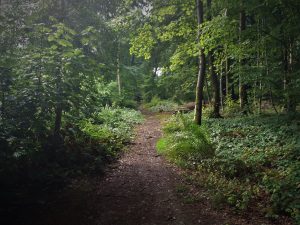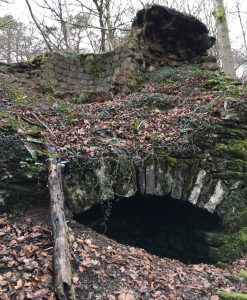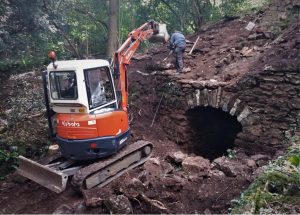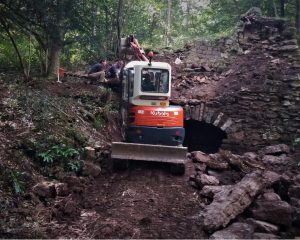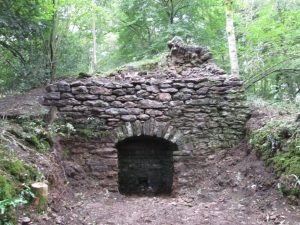It’s been very interesting to be involved with Lime Kiln Woods. I first visited the woods on an organised bat walk in 2011. The Westmorland and Furness Bat Group (now the South Cumbria Bat Group) were asked to run a walk to find out what bats were using the woods. We ran a very enjoyable walk (although the weather was a bit grim, with a steady drizzle) with several bats heard on the bat detectors. A couple of years after this bat walk I was looking for a location to try out some new ideas for bat boxes, and Lime Kiln Wood seemed like an ideal location. One of the key aims of the Trust is to enhance the biodiversity of the woodland and erecting bat boxes would be an ideal way to improve the bat habitat within the woods.
In the first year I put up just two boxes. A few months later I popped by to check the two boxes and I was amazed to find that one of the boxes was being used already, by a single common pipistrelle bat. This is one of the most common bat species in the country and can be found roosting in a variety of locations, from bat boxes, to grand stately homes. A year or so later, I was offered some more boxes by Greenwoods EcoHabitats. These were innovative prototype boxes, made from concrete mixed with reclaimed polystyrene. This makes them very strong but also lightweight and well insulated.
I put these boxes up with a few wooden ones that Peter Davis had kindly made for me and the number of boxes within the woods went up to 10. Again, these were used very quickly, with a two Greenwoods ecostyrocrete boxes being used straight away. This time, although one was used by common pipistrelle bats, the other was used by Natterer’s bats, a scarcer species. Roosts of these species are not common and it was great to find one in the woods so soon after erecting these newer boxes. I put this quick uptake of the boxes down to the lack of natural features in the trees. Although the woodland is a great place for the bats to forage within, there are few gaps or crevices in the trees that the bats can use as a roost. Therefore, when we put the boxes up, it instantly provided the bats with roosting locations so the bats can both roost and forage within the same location.
I have undertaken regular checks over the past couple of years and have put up a further two boxes, including a large box designed for large maternity roosts. During this time I have found bats in five of the boxes. The large wooden box, the most recent to be put up has been a good success, with the Natterer’s bats moving into it soon after putting it up. And then within the winter of 2018 I discovered two species hibernating in the box at the same time; two soprano pipistrelles and one noctule bat. The latter is the largest species of bat in the UK, while the soprano pipistrelle, along with the common pipistrelle, is the smallest! Although not unknown, it is rare to find two species in such close proximity, so it is a testimony to the appeal of this particular box to the bats.
Lime Kiln Woodland is shaping up as an excellent location for bats, with four species of bats found within the boxes now. With eight species resident in Cumbria, it will be interesting to keep checking them and see what else turns up.
Rich Flight. Chairman, South Cumbria Bat Group

